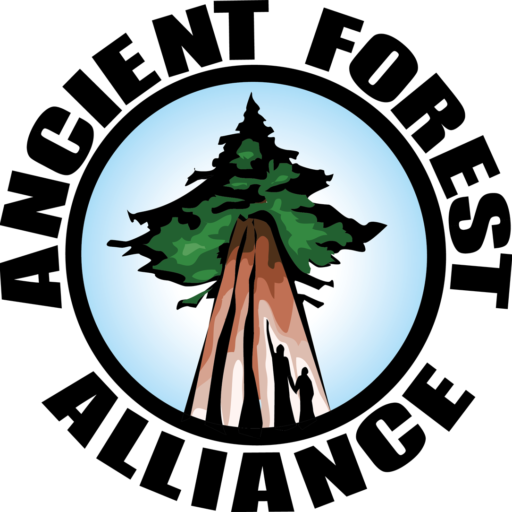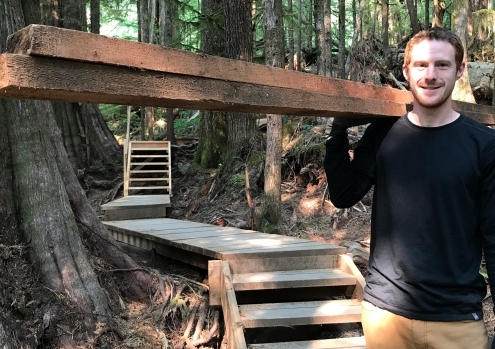
Volunteer-built boardwalk showcases protected old-growth near Port Renfrew
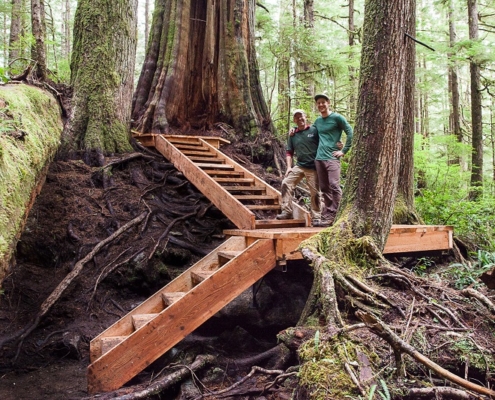
Avatar Grove boardwalk construction to be finished this weekend
This weekend the boardwalk in the Avatar Grove will finally be finished construction after four years.
For the finishing touches, volunteers with the Ancient Forest Alliance (AFA) will be building a new platform, stairs, steps, and walkways, and install signage, on the major project.
“The Avatar Grove’s real significance is that it serves as an example to other communities that protecting old-growth forests benefits the economy by hugely bolstering local businesses and jobs,” said Ken Wu, executive director of the Ancient Forest Alliance.“In helping to revitalize Port Renfrew’s economy, it has clearly counteracted the old, false narrative that saving old-growth forests harms the local economy. The Avatar Grove and its boardwalk have been the most important catalyst for B.C.’s ancient forest movement in recent times and have helped to shape the fate of endangered forests across the province.”
See full article in the Sooke News Mirror: https://www.sookenewsmirror.com/news/avatar-grove-boardwalk-construction-to-be-finished-this-weekend/
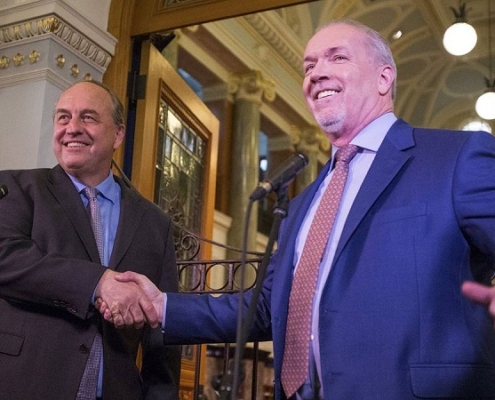
B.C. Greens agree to support NDP in minority legislature
The first Green-Social Democrat governing agreement in North American history has just been landed in British Columbia. In many nations, particularly in Europe, Green-Social Democrat coalitions have been central in pushing through vast progress for environmental and climate sustainability, social justice, and the expansion of the clean tech and renewable energy industries. In New Zealand, a Green-Social Democrat alliance ended old-growth logging there in 1999 - the Ancient Forest Alliance will work hard with this government to help them achieve this goal, which is in the BC Green's platform and which the NDP's platform includes the framework to allow this to happen. Congrat's to Andrew Weaver and John Horgan for concluding successful negotiations! Though more details are yet to come...
See article here: https://beta.theglobeandmail.com/news/british-columbia/greens-announce-support-in-legislature/article35147472/
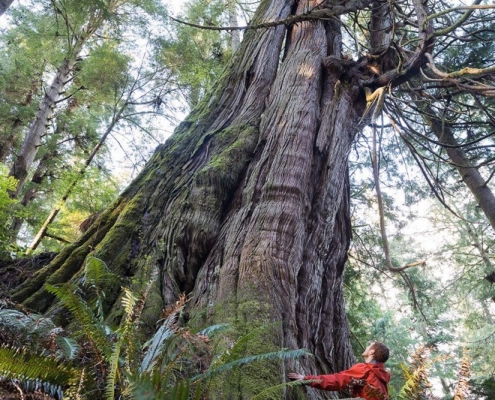
Ancient Forest Alliance Featured in Vancouver Island’s Chinese-Language Newspaper
Vancouver Island's Chinese-language newspaper has run a story about the Ancient Forest Alliance, the Jurassic Grove, and our campaigns to protect old-growth forests, including using our big tree and stump photos. Take note that our Mandarin old-growth ecology walks are just getting underway in the Lower Mainland for the half a million Chinese-language speakers there, but sometime in the future, we hope to get it going on Vancouver Island too.
See the article: https://issuu.com/viweekly/
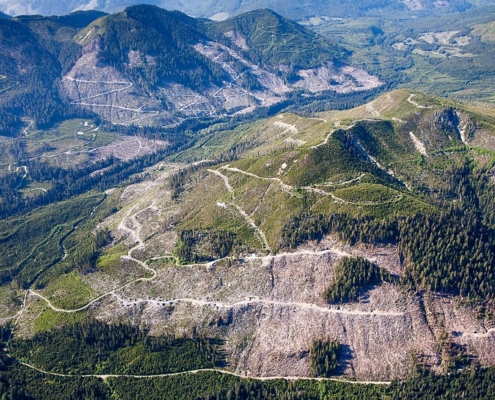
We have to protect all of the world’s rainforests, not just tropical rainforests
Here's an article by the Sierra Club of BC's Alys Granados, featuring a photo by the Ancient Forest Alliance's TJ Watt of recent old-growth clearcutting in the Klanawa Valley on Vancouver Island, in the Georgia Straight.
See article here: https://www.straight.com/news/912886/alys-granados-we-have-protect-all-worlds-rainforests-not-just-tropical-rainforests

Stunning grove of unprotected old-growth trees located near Port Renfrew
Here is a new article about the spectacular Jurassic Grove, a stunning old-growth redcedar forest between Jordan River and Port Renfrew not far off Highway 14 in Pacheedaht territory on Crown land. While much of the grove's 130 hectares is protected within a Marbled Murrelet Wildlife Habitat Area, there is an unprotected 40 hectare tract of giant redcedars (no logging plans for now), and the grove would be a natural protected area addition to buffer the existing Juan de Fuca Marine Trail Park and as a vitally important, extremely rare lowland old-growth stand in its own right.
See the article from Sooke News Mirror: https://www.sookenewsmirror.com
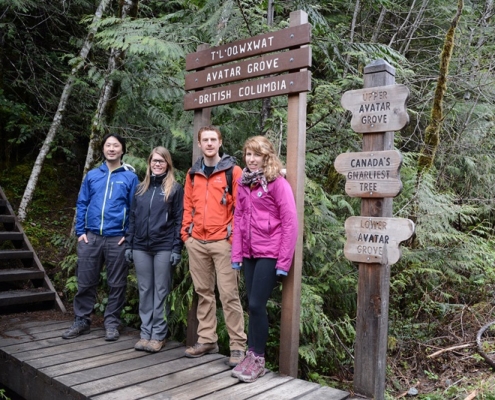
Ancient Forest Alliance Reaches Global Audiences in Al Jazeera News
Check it out! We're starting to reach global audiences, as Al Jazeera news (sort of like the BBC of the Middle East) has put out a new photo essay and article about the Ancient Forest Alliance's campaign to protect BC's old-growth forests from industrial logging. It includes photos of the Ancient Forest Alliance staff (Ken Wu, Andrea Inness, TJ Watt, Molly O'Ray) by the protected Avatar Grove, the endangered Eden Grove and Echo Lake, clearcutting on Edinburgh Mountain near Port Renfrew, forest ecologist Dr. Andy MacKinnon, Port Renfrew Chamber of Commerce president Dan Hager, Cathedral Grove, and the Catalyst mill in Port Alberni. Article and photos by John Zada.
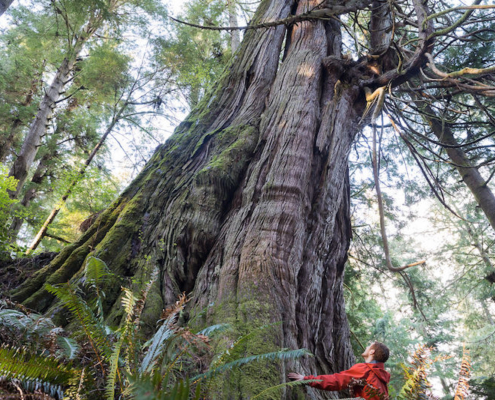
Avatar Grove, the sequel: Introducing Jurassic Grove
Check out the latest Times Colonist article about an unprotected ancient forest we've nicknamed "Jurassic Grove" (which one day might become "Jurassic Park" if it is protected)!
The area includes some of the finest old-growth redcedar stands anywhere. While most of its 130 hectares is protected by a Marbled Murrelet Wildlife Habitat Area, there is a 40 hectare unprotected section as well, and it all lies adjacent to the Juan de Fuca Marine Trail Provincial Park in Pacheedaht territory on Crown lands between Jordan River and Port Renfrew. The article includes interviews with the AFA's Ken Wu and TJ Watt, the Soule Creek Lodge Owner Jon Cash, and veteran BC forest activist Vicky Husband.
See the article from the Times Colonist: https://www.timescolonist.com/n
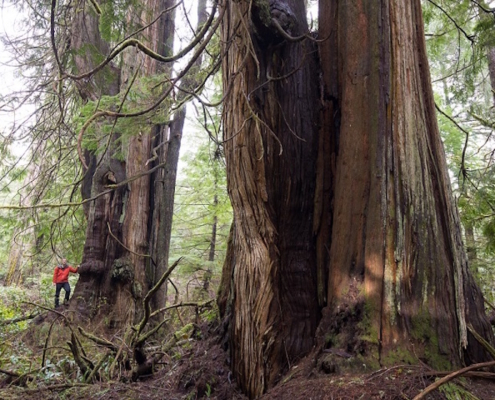
CHEK TV News on the Jurassic Grove
Watch this CHEK News report on Jurassic Grove, an impressive grove of unprotected, monumental old-growth trees only a 90 minute drive west of Victoria between Jordan River and Port Renfrew. The Ancient Forest Alliance is calling attention to the area's high conservation and recreation value and hopes it will be protected.
Click here for the CHEK News report: https://www.cheknews.ca/newly-discovered-old-growth-forest-vancouver-island-312417/
Land of the giants: A wet and wild trip to Port Renfrew
Check out this major travel feature in the Times Colonist newspaper about visiting Avatar Grove! The article highlights how the Ancient Forest Alliance's campaign to protect old-growth forests has become a major economic driver for Port Renfrew, which has now billed itself as the Tall Trees Capital of Canada!
See the article from the Times Colonist: https://www.timescolonist.com/life/travel/land-of-the-giants-a-wet-and-wild-trip-to-port-renfrew-1.16451897
